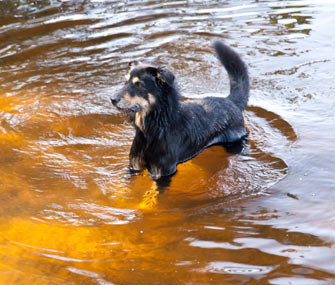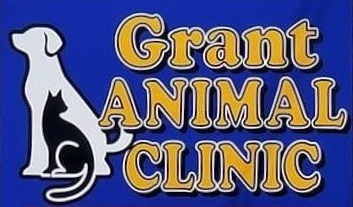
Leptospirosis is a deadly disease caused by the Leptospira bacteria. Leptospira is a cork screw shaped bacteria that self-propels itself effectively in fresh, standing water, such as puddles, ponds, and lakes. The disease is transmitted when dogs and other mammals come into contact with contaminated fresh standing water. Contamination is common given that the main vector for the bacteria is through the urine of asymptomatic rodent carriers, most commonly squirrels, rats, and mice.
The Leptospira bacteria attack the canine liver and kidneys leading to failure of each organ system. Once the dog patient is showing clinical signs (vomiting, fever, jaundice, dehydration, shock), even with aggressive in hospital treatment, the disease carries a 30% mortality rate. As we continue to clear land for development and live adjacent to conservation lands, the disease continues to rise in incidence.
I am blogging about the disease today because there are two very concerning areas of misinformation regarding this disease. One is that small companion dogs that spend little time outside and/or dogs that live in suburban or urban environments are not at risk. This could not be further from the truth. Wherever there is water and rodents, there is a risk of Leptospirosis.
In fact, suburban and urban environments actually carry a higher incidence of disease because wherever there are people that create trash and waste, rodents tend to congregate and reproduce. That is why New York City is one of the biggest hotspots of Leptospirosis. We actually see more Leptospirosis in small and toy breed dogs that are popular in suburban and urban environments compared to other breeds for these reasons.
The other misinformation that needs clarification comes mostly from breeders that put the fear of God into new dog owners that purchase puppies from them about the “danger” of the Leptospirosis vaccine and warn them not to listen to their veterinarian when he/she recommends Leptospirosis as a core vaccine.. Some even go so far as the make the purchasers of one of their puppies sign a contract that they will not allow the vaccine to be administered.
Breeders that make these claims do so with no basis in science and medicine. The vaccine is very safe and the 4 strain Leptospirosis vaccine is very effective in preventing the vaccine.
If these breeders actually worked in the veterinary medical profession, they would clearly learn how absurd fearing the vaccine more than the disease itself is. They would witness how revoltingly sick dogs present when infected with Leptospirosis and they would see the tragedy of 30% of infected dogs dying from a virtually 100% preventable disease. For the lucky dogs that survive Leptospirosis infection, they would see the financial burden put on the families that had to pay for treatment, since Leptospirosis is a zoonotic disease, that is, a disease potentially transmitted to people; requiring referral to expensive isolation facilities for treatment.
My fellow veterinarians and I at Grant Animal Clinic make our vaccine recommendations from data from the American Veterinary Medical Association, the American Animal Hospital Association, and our knowledge of disease known to be endemic in our specific region.
Dr. Roger Welton is a practicing veterinarian and highly regarded media personality through a number of topics and platforms. He is the author of The Man In The White Coat: A Veterinarian’s Tail Of Love. In addition to being passionate about integrative veterinary medicine for which he is a globally recognized expert, Dr. Welton was also an accomplished college lacrosse player and remains to this day very involved in the sport. He is president of Maybeck Animal Hospital , general partner of Grant Animal Clinic, and runs the successful veterinary/animal health blogs Web-DVM and Dr. Roger’s Holistic Veterinary Care. Dr. Welton fulfills his passion for lacrosse through his lacrosse and sport blog, The Creator’s Game.
